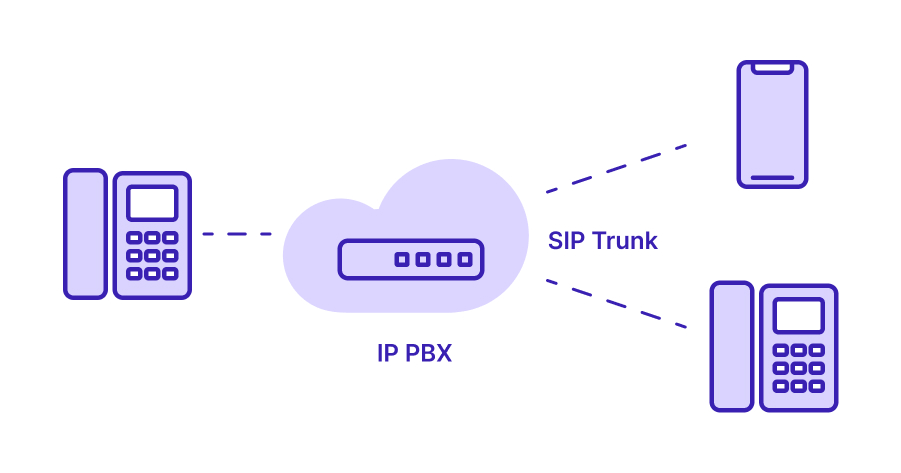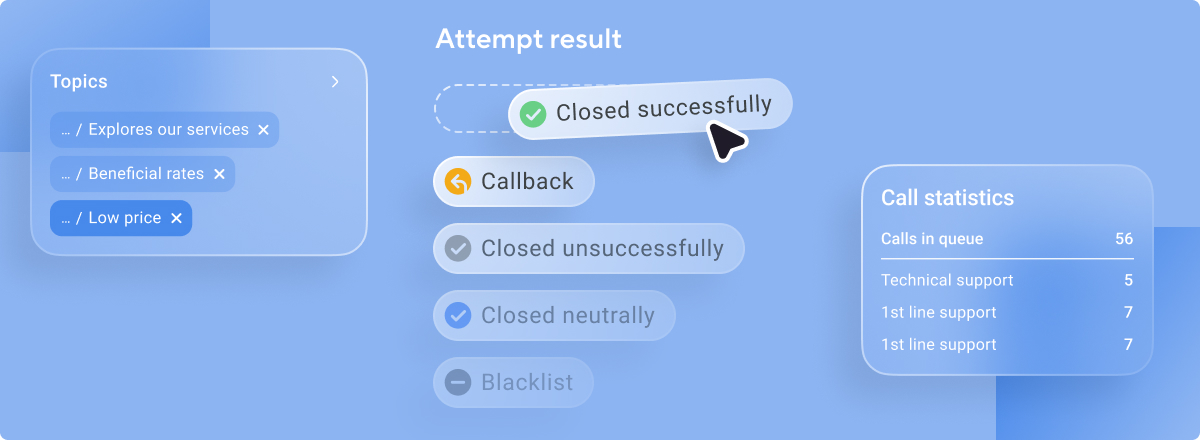Since the late 1800s, phone calls have been carried out over the PSTN, or Public Switched Telephone Network. The PSTN uses connected copper phone lines to make physical phones communicate with each other. A SIP trunk is a virtual alternative to a traditional phone line in IP telephony.
SIP, or Session Initiation Protocol, trunking is a telephony protocol that enables transfers of media data – generally voice or video – between endpoints. SIP manages the signaling that controls the connection so media can be sent through the SIP trunk.
Why Choose SIP Trunk?
- Cost-effectiveness. With SIP trunking, you pay an invariable price per minute for the duration of the call. Regardless of the device or country you call
- Scalability. There is no limit on the number of virtual lines. You can handle as many concurrent calls as your business needs
- Flexibility. SIP trunking allows you to set up both geographic and non-geographic phone numbers
- Quality. The digitization of the media, various quality controls provide, and HD audio options provide superior quality to the older PSTN
How Does SIP Trunk Work?

To send data with no delays or loss of quality, SIP trunks use SIP channels and voice codecs. Let’s break down what each component is used for.
One SIP Channel for One Call
SIP trunks connect to your IP-enabled PBX via SIP channels, or SIP lines. Each SIP trunk can support an unlimited number of SIP channels. Note that there could be limits to prevent abuse. One SIP channel is associated with a single inbound or outbound call.
The number of channels varies depending on how many calls your business needs to handle. The more calls you make, the more channels you connect.
Secret Sauce of SIP
Voice codecs compress the audio signal to send over the Internet. When audio reaches the remote endpoint, codecs decompress audio for replay.
Different Internet bandwidth requires a different level of audio compression. Highly-compressed signals require less Internet bandwidth but can harm the audio signal quality.
There are various codecs for a different level of compression. Two commonly used in SIP trunks are G.711 and G.729. While the G.711 voice codec offers an uncompressed high-quality voice, G.729 uses less bandwidth, thus compressing audio that sacrifices quality. We’ll prepare a complete blog post describing codecs later.





